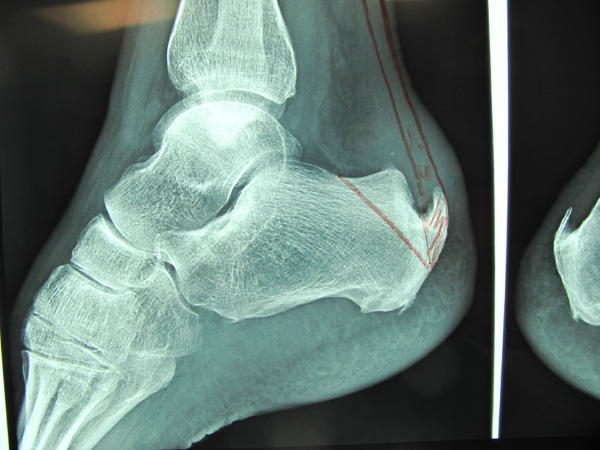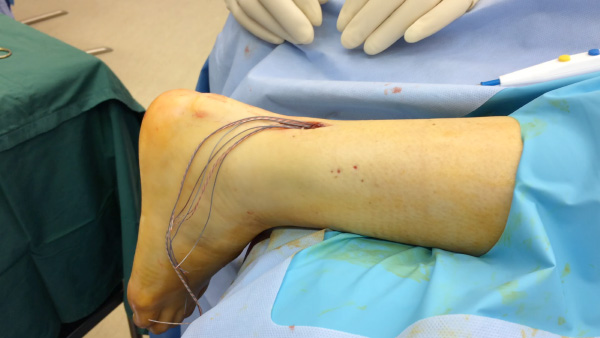Subtalar
This is the joint below the ankle joint. It is a joint that is required to negotiate uneven ground. It is sometimes injured in a sprain but can also be the source of pain with conditions such as Rheumatoid arthritis or coalition.
TN and CC joints
These are other joints further down the foot, and these may be affected by conditions as with any other joint.
Neuromuscular issues
Paralysis due to nerve injury or perhaps stroke may lead to muscular imbalance issues across the foot; this may present with a weakness of the foot, known as foot drop or perhaps the development of deformity over time. This deformity may present difficulty with shoe-wear or walking. These issues are complex and require individual assessment.

Achilles tendon issues
The Achilles tendon inserts into the heel and transmits huge force with running, stair climbing and other activity.
This tendon is not uncommonly an issue that requires our attention:
Achilles tendinosis
The Achilles tendon is often affected by a lump that develops about 6 cm above its insertion into the heel bone or calcaneum. The lump is often very uncomfortable.
Recent research suggests that the reason for the pain is the growth of new blood vessels between the tendon and its sheath. This knowledge has allowed the development of a very simple procedure, this time by the arthroscope, where the vessels are simply divided. The vessels contain the pain fibres and division of the pain fibres results in removal of pain in the vast majority of patients.
Recovery is also relatively quick as there are only two small arthroscopy portals to heal. Full weight bearing is allowed immediately after this relatively minor day only procedure.
Of course, physiotherapy, weight loss and a stretching programme are initiated before surgery as not every patient needs an operation for this condition.

Achilles tendon tears
In most patients, tears of the Achilles tendon are best managed by surgical treatment. Usually, after a short period of rest to allow swelling to go down, the tendon is repaired using a mini-surgical technique. With the new technique, the tendon is actually repaired with fixation to bone. This allows rapid recovery with a much more rapid recovery over a three month period rather than the traditional 6 to 9 month period. A/Prof Miniter is a leader in this field.
By way of example, one of our patients recently underwent this reconstructive surgery after an acute injury. He was able to run the New York marathon on in four months!
